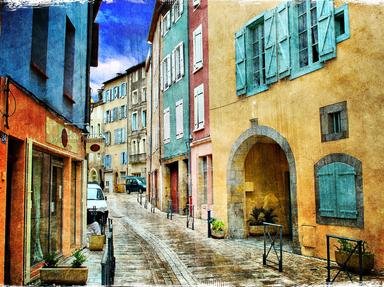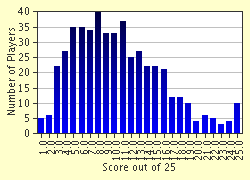Quiz Answer Key and Fun Facts
1. Which is the oldest of these works of art?
2. What period do megaliths date from?
3. What style did much of ancient Egyptian art emphasize?
4. The art of which civilization depicted sea life and included statues of a female snake goddess?
5. What was contrapposto designed to do?
6. What style of art is exemplified by the Tara Brooch?
7. Which is NOT a characteristic of the Romanesque style?
8. Which is NOT a characteristic of the Gothic style?
9. The transition from the Middle Ages to the Renaissance provides a good example that history cannot always be neatly divided into a series of discrete and separate styles and events. Styles from this period cannot be neatly identified as either Gothic or Renaissance, but are rather a mixture of the two. Who is the artist most often mentioned in connection with this transitional time period?
10. The beginning of the Renaissance is generally attributed to a competition held in Florence in 1400 to design of the doors for the city's new cathedral. Who won?
11. What is considered to be Leonardo da Vinci's key innovation in painting?
12. Who is credited with innovating the subject matter of landscapes?
13. This term is generally used to refer to artworks produced from the late 16th century through the mid-18th century. They differ from Renaissance styles in that these artworks tend to be less static than Renaissance artworks and are characterized by a greater sense of movement and energy. What is the term for these artworks?
14. This style celebrated gaiety, romance, and the frivolity of the grand life of court, particularly the court at Versailles. The emphasis was on light-hearted decoration with the use of gold and pastel colors. What was this style?
15. Who introduced the neoclassical style to France?
16. This style tended to be highly imaginative and was characterized by an emotional and dreamlike quality. It was something of a revolt against the Enlightenment and Science. William Blake was an example of this movement. What is this style?
17. This style was inspired by the idea that painting was bound to show all the features of its subjects, including the negative ones. What is this style?
18. This movement largely grew out of dissatisfaction with the rigid rules that had come to dominate the Salons. It was characterized clear, bright colors and feelings of light and air. What is this style?
19. Which of these was NOT a post-Impressionist?
20. These artists created a style that attempted to return to the simpler forms of pre-Renaissance art. They created many quasi-religious works that often blended Romantic, archaic, and moralistic elements. Who were they?
21. This was a group of artists led by Henri Matisse. What was it?
22. This movement was led by Russian artist Vasily Kandinsky. What was it?
23. This movement originated among a group of dissatisfied intellectuals living in Zurich and grew out of the angst of artists who were disillusioned with the First World War. What was it?
24. Some artists, influenced by the theories of Sigmund Freud, attempted to portray the inner workings of the mind in their artworks. This group became known as what?
25. And finally, we'll end with an easy one: this was the school of design that attempted to reconcile industrial mass-manufacture with aesthetic form?
Source: Author
SuperRo
This quiz was reviewed by FunTrivia editor
CellarDoor before going online.
Any errors found in FunTrivia content are routinely corrected through our feedback system.


